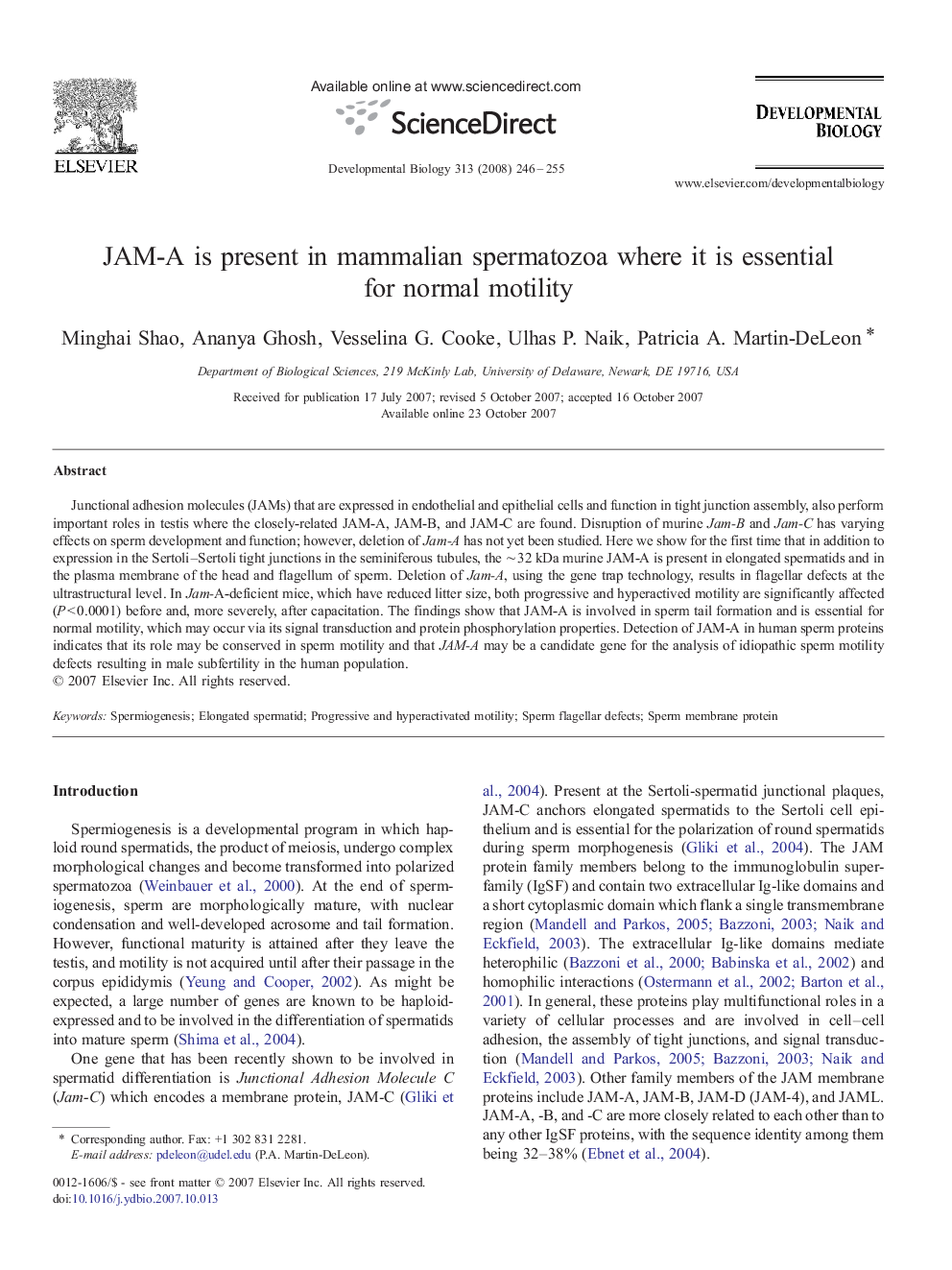| Article ID | Journal | Published Year | Pages | File Type |
|---|---|---|---|---|
| 2174934 | Developmental Biology | 2008 | 10 Pages |
Junctional adhesion molecules (JAMs) that are expressed in endothelial and epithelial cells and function in tight junction assembly, also perform important roles in testis where the closely-related JAM-A, JAM-B, and JAM-C are found. Disruption of murine Jam-B and Jam-C has varying effects on sperm development and function; however, deletion of Jam-A has not yet been studied. Here we show for the first time that in addition to expression in the Sertoli–Sertoli tight junctions in the seminiferous tubules, the ∼ 32 kDa murine JAM-A is present in elongated spermatids and in the plasma membrane of the head and flagellum of sperm. Deletion of Jam-A, using the gene trap technology, results in flagellar defects at the ultrastructural level. In Jam-A-deficient mice, which have reduced litter size, both progressive and hyperactived motility are significantly affected (P < 0.0001) before and, more severely, after capacitation. The findings show that JAM-A is involved in sperm tail formation and is essential for normal motility, which may occur via its signal transduction and protein phosphorylation properties. Detection of JAM-A in human sperm proteins indicates that its role may be conserved in sperm motility and that JAM-A may be a candidate gene for the analysis of idiopathic sperm motility defects resulting in male subfertility in the human population.
